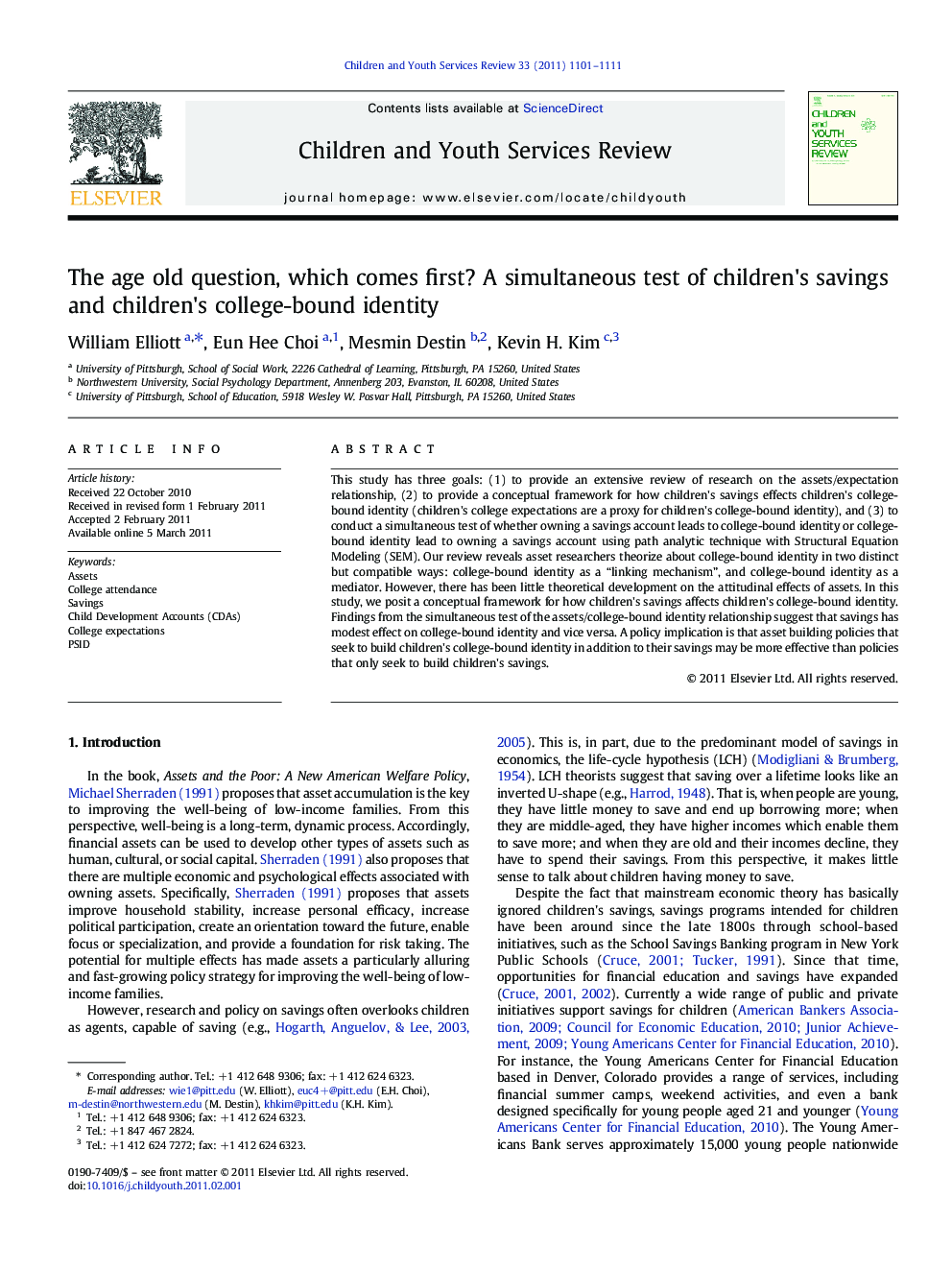| کد مقاله | کد نشریه | سال انتشار | مقاله انگلیسی | نسخه تمام متن |
|---|---|---|---|---|
| 346855 | 617840 | 2011 | 11 صفحه PDF | دانلود رایگان |

This study has three goals: (1) to provide an extensive review of research on the assets/expectation relationship, (2) to provide a conceptual framework for how children's savings effects children's college-bound identity (children's college expectations are a proxy for children's college-bound identity), and (3) to conduct a simultaneous test of whether owning a savings account leads to college-bound identity or college-bound identity lead to owning a savings account using path analytic technique with Structural Equation Modeling (SEM). Our review reveals asset researchers theorize about college-bound identity in two distinct but compatible ways: college-bound identity as a “linking mechanism”, and college-bound identity as a mediator. However, there has been little theoretical development on the attitudinal effects of assets. In this study, we posit a conceptual framework for how children's savings affects children's college-bound identity. Findings from the simultaneous test of the assets/college-bound identity relationship suggest that savings has modest effect on college-bound identity and vice versa. A policy implication is that asset building policies that seek to build children's college-bound identity in addition to their savings may be more effective than policies that only seek to build children's savings.
Research Highlights
► Children's savings is a significant predictor of children's college expectations.
► Children's college expectations are a significant predictor of children's savings.
► Findings suggest that two-way causation may be present.
Journal: Children and Youth Services Review - Volume 33, Issue 7, July 2011, Pages 1101–1111